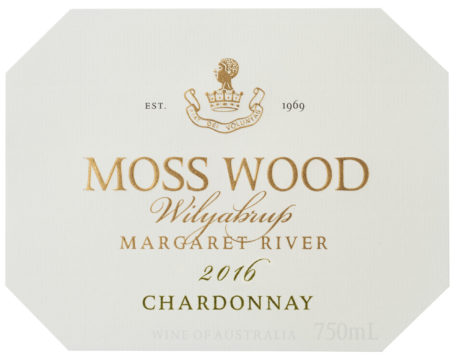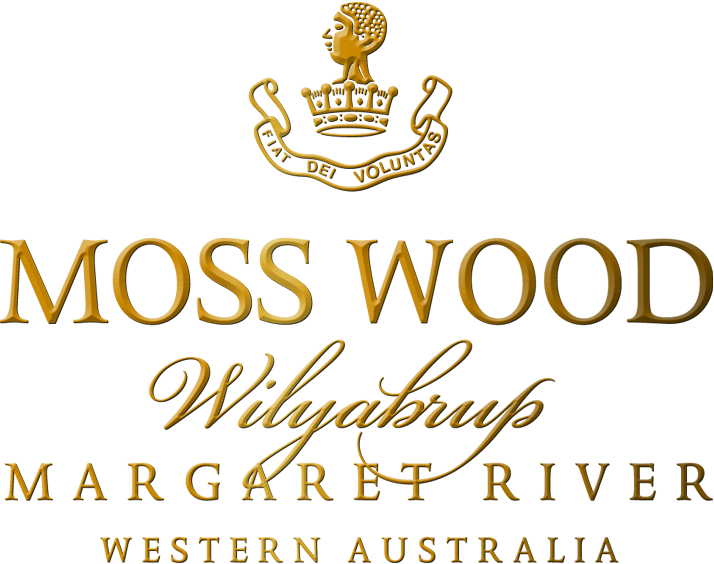Moss Wood 2016 Chardonnay

Wine Facts
| Median Harvest: | 26/02/2016 |
| Bottled: | 02/08/2017 |
| Released: | 20/08/2017 |
| Yield: | 6.32 t/ha |
| Median Harvest Ripeness: | 12.6⁰ Baume |
| Alcohol: | 13.5% |
It is not news that the Margaret River Wine Region is internationally recognised as a premium producer of Cabernet Sauvignon and Chardonnay and Moss Wood is well known for its cabernet. However, our Pinot Noir often flies under the radar and it is not uncommon to hear customers remark they didn’t know we make it.
It’s ironic because we were very early adopters in Australia of pinot noir and chardonnay and their quality has been acclaimed throughout the years. Perhaps our efforts in promoting our Chardonnay and Pinot Noir haven’t been up to the mark.
Bill and Sandra Pannell were keen to grow the great grape varieties of France, certainly from Bordeaux but also from Burgundy. From the latter they planted Pinot Noir in 1973 and Chardonnay, as soon as cuttings became available in Western Australia, in 1976. Their first vintages were 1977 and 1980, respectively. The great red and white wines of Burgundy remain the reference point for us, although we are not trying to recreate the Cote D’Or in Wilyabrup. The wines are true to their sense of place.
Our point is, those who don’t know about Moss Wood Chardonnay and Moss Wood Pinot Noir are missing out on two of the dark horses in the Moss Wood stable.
Tasting Notes
Colour and condition: Light to medium straw hue, with green tints. Bright condition.
Nose: Lifted fruit aromas of peach, lime and quince with fragrant orange blossom notes. Behind this is a rich background of roasted nuts, caramel, cheese and soft oak, leaning towards cinnamon and toasty notes, almost toasted hot cross buns.
Palate: This brightness is also reflected on the palate where generous peach and grapefruit flavours mesh with crisp acidity, full body and a firm tannin to give great length and mouthfeel.
Vintage Notes
2016 Chardonnay Weather Data
Growing Season Ave Temperature – 20.1⁰C
Number of hours accrued between 18 and 28⁰C – 1039
Number of hours above 33⁰C – 26
Days Elapsed Between Flowering and Harvest 117 days
Well, folks, we start of the discussion of the 2016 Moss Wood Chardonnay by noting that Margaret River racked up another excellent growing season in 2015/16. Rainfall in calendar year 2015 was a solid, if slightly low, 959mm. During the growing season we received 257mm and 30mm of this fell during Chardonnay’s flowering period. This wasn’t ideal and restricted yields somewhat but the nights weren’t cold and that certainly worked in our favour.
Overall, the temperatures were very reasonable, with the Chardonnay experiencing 1039 hours between 18⁰C and 28⁰C, plus some good warm days, two of which saw the mercury reach 39⁰C, giving a total of 56 hours above 33⁰C.
The median harvest date of 26th February was 5 days earlier than average, although the time elapsed from flowering to harvest was slower than average, 117 days compared with 113 days.
All this suggests the weather was benign but in fact Mother Nature threw us a big curve ball, a hint of which can be seen in the last paragraph. Why was the season period from flowering to harvest extended by 4 days? The answer is, we had 115mm of rain during January, 106mm of which fell over 3 days, the 18th, 19th and 20th. This was very worrying but by a combination of good luck and good management we were able to get through with no damage, although it was all a bit close for comfort.
The good luck came with the timing. Rain can cause the fruit to split, which in turn allows rot to take hold. Fortunately, all the varieties still had hard green berries that are resistant to splitting but had the rain come a week later, with the resulting increase in ripeness, the Chardonnay grapes would have been softening and very prone indeed.
Without wanting to take too much credit, we can also claim our management made a contribution as well. Yes, the timing of the rain was in our favour, but any rain can promote fungal infections on the leaves and the fruit. That this didn’t happen is a tribute to our spray program and we’d like to think this is the result of our careful work in this area.
As with all industries, technology advances and wine is no different. For the 2015/16 growing season we took a significant step forward and replaced our old-fashioned “air blast” fungicide sprayer with a new, self-calibrating machine which captures and recycles any spray drift.
The accuracy and efficiency of the new unit has exceeded our expectations. Spray volumes are accurate to within 5% of our target and there is no waste. The recycling system ensures any liquid that doesn’t hit the plant is recovered and returned to the tank. There is no unnecessary drift into the environment and refills are reduced, so spraying time is cut by half. Most importantly of all, under extreme conditions, the spray program worked.
Having got the fruit safely past these various challenges, harvest commenced on 26thFebruary at a ripeness of 12.6⁰ Baume.
Production Notes
All the fruit was hand-picked, whole bunch pressed and then the juice was settled in stainless steel tank for 48 hours. Once clarified, it was seeded with a mixture of different yeast cultures and racked to wood for the primary and malolactic fermentations. All the barrels were 228 litre French oak and 50% were new.
After 16 months, all the barrels were racked and blended in stainless steel. Fining trials were carried out and the wine was fined with bentonite for protein stability and no other treatments were necessary. It was then sterile filtered and bottled on 2nd August, 2017.
Cellaring Notes
Here at Moss Wood the consensus is this is quite likely the best Chardonnay we’ve made since 2006 and looms as a rival for Keith’s favourite, the 1984. Speaking of the latter, when we tried our last bottle in 2016, it had survived the journey to 32 years old and done it in style. We have the same expectation of the 2016 and believe it will show off its great fruit depth for the next decade, after which the bottle bouquet will gradually emerge, such that full maturity should be reached around 20 years cellaring. Beyond that, it should age slowly and gracefully to beyond 30 years of age.
